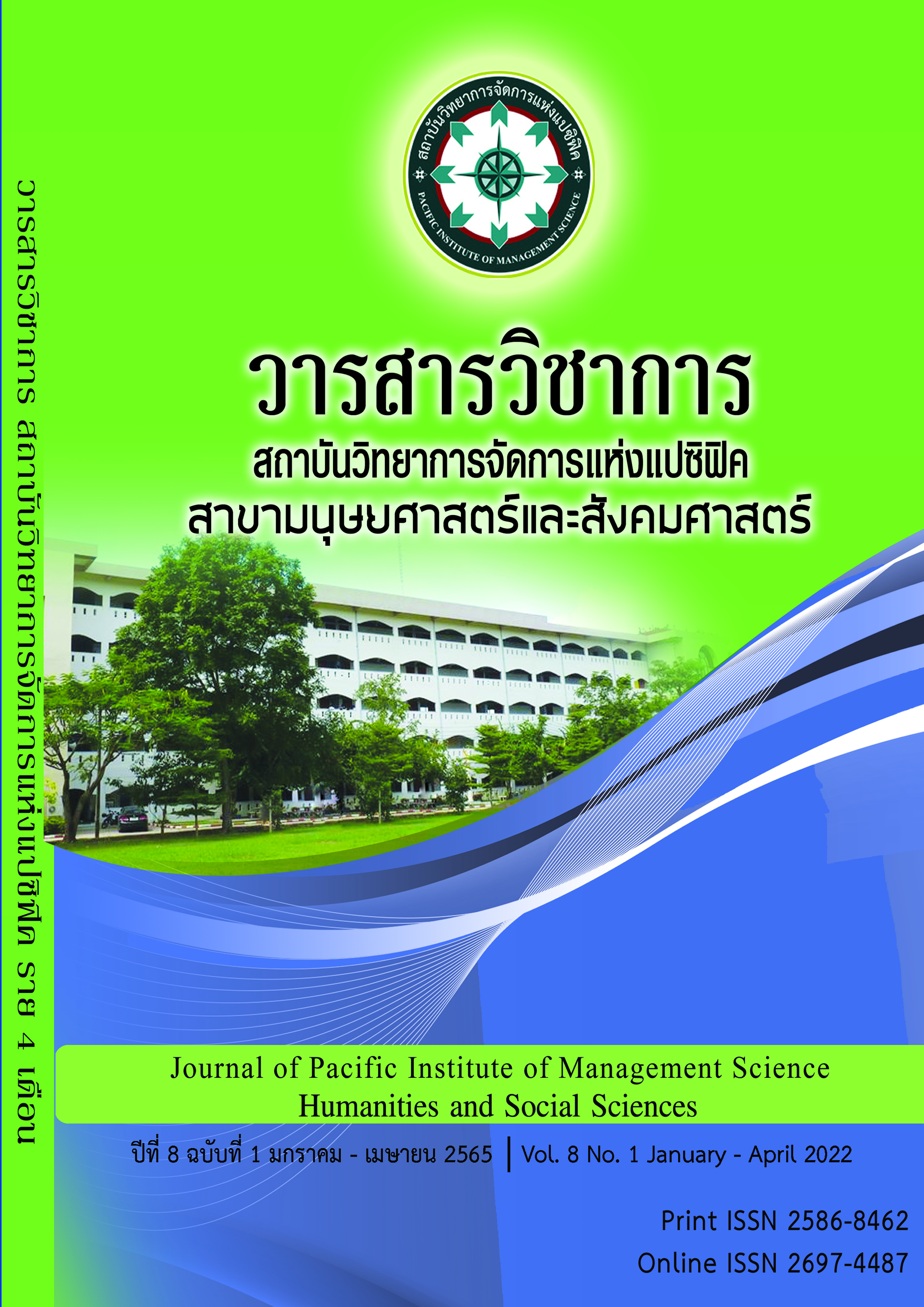A Study and Developing a prototype of Energy Saving to Support Energy Using
Keywords:
Prototype Development, Energy, Energy SavingAbstract
The research of a study and developing a prototype of energy saving to support energy using. The objective are 1) to study electricity consumption habits and to compare air quality in areas with and without real-time air conditioning 2) to study the operating systems of IoT (Internet of Things) measuring devices and 3) to study design and create air quality reporting systems.
The result of electricity consumption between February 21-27, 2022, it was found that the peak time of electricity usage was 8.30-18.00 that was working time. The most electricity was 2,050 kWh on February 23 which equal to 8,200 bath (4 bath/kW). Moreover, between July 2021 to February 2022 found that the highest electricity consumption in November 2021 is 49,960 kWh, which equal to 199,840 bath. A comparative study of air quality in inside and outside the room areas found that the dust sensor outside showed PM 2.5 dust more than other sensors that inside the rooms about 64.28%.
The results showed that due to the behavior of smart electricity meters, the results of the smart electricity meters were not the only ones that were used to be able to use the smart It can be applied by applying the energy consumption effect and can create models for predicting the results of electricity consumption with dynamic modeling or periodically adjusting model calculations to make models more accurate and can be used to predict future data more accurately. It can be predicted more long-term based on the amount of data available over time, and the modeling and prediction system is complete which makes the model more accurate because the electricity consumption behavior is partly due to the consequences of the seasons and annual festivals or holidays. Even though of the internet system is not stable resulting in incomplete data transmission. However, the data transmission system of the IoT measurement device is considered to work with acceptable performance.
References
ข้อมูลดัชนีคุณภาพอากาศ. http://air4thai.pcd.go.th/webV2/aqi_info.php. วันที่ 20 กุมภาพันธ์ พ.ศ. 2565.
ข้อมูลการใช้งานอุปกรณ์ NodeMCU ESP8266 เบื้องต้น. NodeMCU V2 LUA based ESP8266-12F/N NodeMCU V2 Development Kit. https://www.allnewstep.com/. วันที่ 29 กุมภาพันธ์ พ.ศ. 2565.
รายงานสถานการณ์โรคและภัยสุขภาพประจำสัปดาห์. สำนักงานป้องกันควบคุมโรคที่ 8 จังหวัดอุดรธานี กรมควบคุมโรค. http://odpc8.ddc.moph.go.th. วันที่ 20 กุมภาพันธ์ พ.ศ. 2565.
IoT Smart Meter’ มิเตอร์ไฟฟ้าอัจฉริยะ. (2565). https://www.salika.co/2019/05/25/iot-smart-meter-innovation-by-ais-kmutnb/. วันที่ 23 กุมภาพันธ์ พ.ศ. 2565.
อดิศักดิ์ ประพันธ์กุล และ อภินิติ โชติสังกาศ. (2564). การประยุกต์ใช้ระบบตรวจวัดเพื่อควบคุมฝุ่นในพื้นที่ก่อสร้างโดยใช้เทคโนโลยีโอทีอินเทอร์เน็ตในทุกสิ่ง. วารสารการประชุมทางวิชาการของมหาวิทยาลัยเกษตรศาสตร์ ครั้งที่ 58 หน้าที่ 352 – 361.
อรวรรณ พลฤทธิ์, ณัฐฐกิตติ์ อานันท์สันติ, ณัฐวัตร เหล่าตระกูลงาม และนวลรัตน์ วัฒนาใล.(2563). ระบบตรวจวัดค่าฝุ่นละอองในอากาศบนอุปกรณ์สมาร์ทโฟน. วารสารวิทยาการและเทคโนโลยีสารสนเทศ. ฉบับที่ 10. หนาที่ 1-9.
Downloads
Published
Issue
Section
License
Copyright (c) 2022 Pacific Institute of Management Science

This work is licensed under a Creative Commons Attribution-NonCommercial-NoDerivatives 4.0 International License.
บทความที่ได้รับการตีพิมพ์เป็นลิขสิทธิ์ของ สถาบันวิทยาการจัดการแห่งแปซิฟิค
ข้อความที่ปรากฏในบทความแต่ละเรื่องในวารสารวิชาการเล่มนี้เป็นความคิดเห็นส่วนตัวของผู้เขียนแต่ละท่านไม่เกี่ยวข้องกับสถาบันวิทยาการจัดการแห่งแปซิฟิค และคณาจารย์ท่านอื่นๆในสถาบันฯ แต่อย่างใด ความรับผิดชอบองค์ประกอบทั้งหมดของบทความแต่ละเรื่องเป็นของผู้เขียนแต่ละท่าน หากมีความผิดพลาดใดๆ ผู้เขียนแต่ละท่านจะรับผิดชอบบทความของตนเองแต่ผู้เดียว







